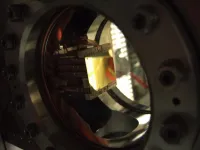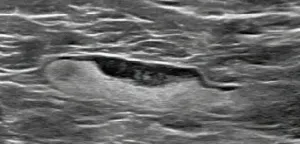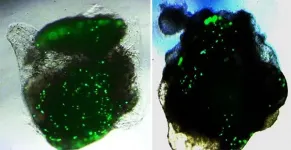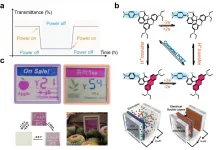(Press-News.org) Heads or tails? If we toss two coins into the air, the result of one coin toss has nothing to do with the result of the other. Coins are independent objects. In the world of quantum physics, things are different: quantum particles can be entangled, in which case they can no longer be regarded as independent individual objects, they can only be described as one joint system.
For years, it has been possible to produce entangled photons - pairs of light particles that move in completely different directions but still belong together. Spectacular results have been achieved, for example in the field of quantum teleportation or quantum cryptography. Now, a new method has been developed at TU Wien (Vienna) to produce entangled atom pairs - and not just atoms which are emitted in all directions, but well-defined beams. This was achieved with the help of ultracold atom clouds in electromagnetic traps.
Entangled particles
"Quantum entanglement is one of the essential elements of quantum physics," says Prof. Jörg Schmiedmayer from the Institute of Atomic and Subatomic Physics at TU Wien. "If particles are entangled with each other, then even if you know everything there is to know about the total system, you still cannot say anything at all about one specific particle. Asking about the state of one particular particle makes no sense, only the overall state of the total system is defined."
There are different methods of creating quantum entanglement. For example, special crystals can be used to create pairs of entangled photons: a photon with high energy is converted by the crystal into two photons of lower energy - this is called "down conversion". This allows large numbers of entangled photon pairs to be produced quickly and easily.
Entangling atoms, however, is much more difficult. Individual atoms can be entangled using complicated laser operations - but then you only get a single pair of atoms. Random processes can also be used to create quantum entanglement: if two particles interact with each other in a suitable way, they can turn out to be entangled afterwards. Molecules can be broken up, creating entangled fragments. But these methods cannot be controlled. "In this case, the particles move in random directions. But when you do experiments, you want to be able to determine exactly where the atoms are moving," says Jörg Schmiedmayer.
The twin pair
Controlled twin pairs could now be produced at TU Wien with a novel trick: a cloud of ultracold atoms is created and held in place by electromagnetic forces on a tiny chip. "We manipulate these atoms so that they do not end up in the state with the lowest possible energy, but in a state of higher energy," says Schmiedmayer. From this excited state, the atoms then spontaneously return to the ground state with the lowest energy.
However, the electromagnetic trap is constructed in such a way that this return to the ground state is physically impossible for a single atom - this would violate the conservation of momentum. The atoms can therefore only get trasferred to the ground state as pairs and fly away in opposite directions, so that their total momentum remains zero. This creates twin atoms that move exactly in the direction specified by the geometry of the electromagnetic trap on the chip.
The double-slit experiment
The trap consists of two elongated, parallel waveguides. The pair of twin atoms may have been created in the left or in the right waveguide - or, as quantum physics allows, in both simultaneously. "It's like the well-known double-slit experiment, where you shoot a particle at a wall with two slits," says Jörg Schmiedmayer. "The particle can pass through both the left and the right slit at the same time, behind which it interferes with itself, and this creates wave patterns that can be measured."
The same principle can be used to prove that the twin atoms are indeed entangled particles: only if you measure the entire system - i.e. both atoms at the same time - can you detect the wave-like superpositions typical of quantum phenomena. If, on the other hand, you restrict yourself to a single particle, the wave superposition disappears completely.
"This shows us that in this case it makes no sense to look at the particles individually," explains Jörg Schmiedmayer. "In the double-slit experiment, the superpositions disappear as soon as you measure whether the particle goes through the left or the right slit. As soon as this information is available, the quantum superposition is destroyed. It is very similar here: if the atoms are entangled and you only measure one of them, you could theoretically still use the other atom to measure whether they both originated in the left or the right part of the trap. Therefore, the quantum superpositions are destroyed."
Now that it has been proven that ultracold atom clouds can indeed be used to reliably produce entangled twin atoms in this way, further quantum experiments are to be carried out with these atom pairs - similar to those that have already been possible with photon pairs.
INFORMATION:
Contact
Prof. Jörg Schmiedmayer
Institute of Atomic and Subatomic Physics, Vienna Center for Quantum Science and Technology (VCQ)
TU Wien
Stadionallee 2, 1020 Wien
+43 1 58801 141888
hannes-joerg.schmiedmayer@tuwien.ac.at
schmiedmayer@AtomChip.org
Knowing the environmental and human-related variables that characterize the favorable areas for the incidence of the West Nile virus, a flavivirus that is transmitted from birds to humans by mosquitoes, is essential to identify those places in Europe at high risk of experiencing outbreaks, even before these are registered, thus enabling preventive measures to be taken.
Researchers of the Biogeography, Diversity and Conservation Group of the University of Malaga have developed risk models for West Nile Fever, the disease caused in humans by this virus, which, based on historical incidence data, may predict areas of future outbreaks a year in advance, as well as detect their intensity.
Artificial intelligence to develop risk ...
Leesburg, VA, February 24, 2021--An open-access article in ARRS' American Journal of Roentgenology (AJR) describes the clinical and imaging features of axillary adenopathy detected during screening or diagnostic breast imaging after recent coronavirus disease (COVID-19) vaccination to inform the development of follow-up recommendations.
Shabnam Mortazavi of the University of California at Los Angeles reviewed electronic medical records to identify women with post-COVID-19 vaccination adenopathy found from December 2020 to February 2021. For mammography, Mortazavi considered a node abnormal when its size, shape, or density was deemed disproportionate to other axillary nodes (ipsilateral or contralateral). On ultrasound, she deemed ...
With the voice commands "Alexa Skills," users can load numerous extra functions onto their Amazon voice assistant. However, these Skills can often have security gaps and data protection problems, as a team of researchers from the Horst Görtz Institute for IT Security at Ruhr-Universität Bochum (RUB) and North Carolina State University discovered, together with a former PhD student who started to work for Google during the project. They will present their work at the "Network and Distributed System Security Symposium (NDSS)" conference on 24 February 2021.
More than 90,000 Skills analyzed
In their study, the researchers ...
Torino, February 24, 2021 - The eukaryotic cell is the basic unit of animals and plants. At the microscope, it looks highly structured and subdivided in many membrane-bound compartments. Each compartment has a specific function, and its membrane is populated by specific molecules. How does the cell preserve this amazing internal order, and (in the absence of pathologies) does not degrade into a shapeless bunch of molecules? Such degradation is countered by a continuous process of molecule sorting by which similar molecules are collected and dispatched to the "right" destinations, similarly to what happens when a house is kept clean and ...
COVID-19, the disease caused by the pandemic coronavirus SARS-CoV-2, is primarily regarded as a respiratory infection. Yet the virus has also become known for affecting other parts of the body in ways not as well understood, sometimes with longer-term consequences, such as heart arrhythmia, fatigue and "brain fog."
Researchers at University of California San Diego School of Medicine are using stem cell-derived organoids -- small balls of human cells that look and act like mini-organs in a laboratory dish -- to study how the virus interacts with various organ systems and to develop therapies to block infection.
"We're finding that SARS-CoV-2 doesn't infect the entire body in the same way," said Tariq Rana, PhD, professor ...
If Affordable Care Act protections for pre-existing condition coverage are no longer available, the coronavirus pandemic would leave many Americans - a disproportionate number of whom are people of color - without health insurance, a new Oregon Health & Science University study indicates.
Published in the Journal of the American Board of Family Medicine, the study's findings reveal a third of the more than 7,500 COVID-19 patients who received care at U.S. community health centers between March and October 2020 did not have a pre-existing condition prior to contracting the novel ...
UCLA RESEARCH BRIEF
Enrique Rivero
FINDINGS
Older people correctly ascertained basic information such as dosage and duration of use for more than 70% of the medications they were prescribed, regardless of whether their physician explained it during an office visit. But when physicians failed to verbally provide information about potential side effects, people incorrectly assumed that about 55% of their prescribed medications had none. Even when physicians did discuss possible side effects, their patients incorrectly assumed there were no side effects for 22% of the medications.
BACKGROUND
There is a shortage of data about how well people understand basic information about the medications they are prescribed. This information ...
The development of low-energy-consumption and user-friendly electronic displays has become a long-term goal for future global sustainable development. Bistable electronic display, which requires very little electric drive to turn pages without consuming additional power to continuously display information/images, is one of the very good potential alternatives. Reflective display technologies with partial/complete bistable characteristics include e-ink, cholesteric liquid crystal, and electrochromic technologies, etc. They display information in light reflection mode, which can still be read under high-brightness outdoor sunlight and relatively dark indoor environments. It is also very friendly to the ...
The yellow fever mosquito (Aedes aegypti) is a main vector of deadly diseases like dengue fever, chikungunya, and the Zika virus, which result in hundreds of thousands of deaths worldwide each year. Because Ae. aegypti prefers to bite humans and there are no vaccines for many of these diseases they carry, developing methods to control these insects is imperative in the fight to control illness.
In a study recently published in Proceedings of the National Academy of Sciences, a Yale-led research team developed a new method to track how Ae. aegypti move through the environment. ...
Live tracking and analyzing of the dynamics of chimeric antigen receptor (CAR) T-cells targeting cancer cells can open new avenues for the development of cancer immunotherapy. However, imaging via conventional microscopy approaches can result in cellular damage, and assessments of cell-to-cell interactions are extremely difficult and labor-intensive. When researchers applied deep learning and 3D holographic microscopy to the task, however, they not only avoided these difficultues but found that AI was better at it than humans were.
Artificial intelligence (AI) is helping researchers decipher images from a new holographic microscopy technique needed to investigate ...




